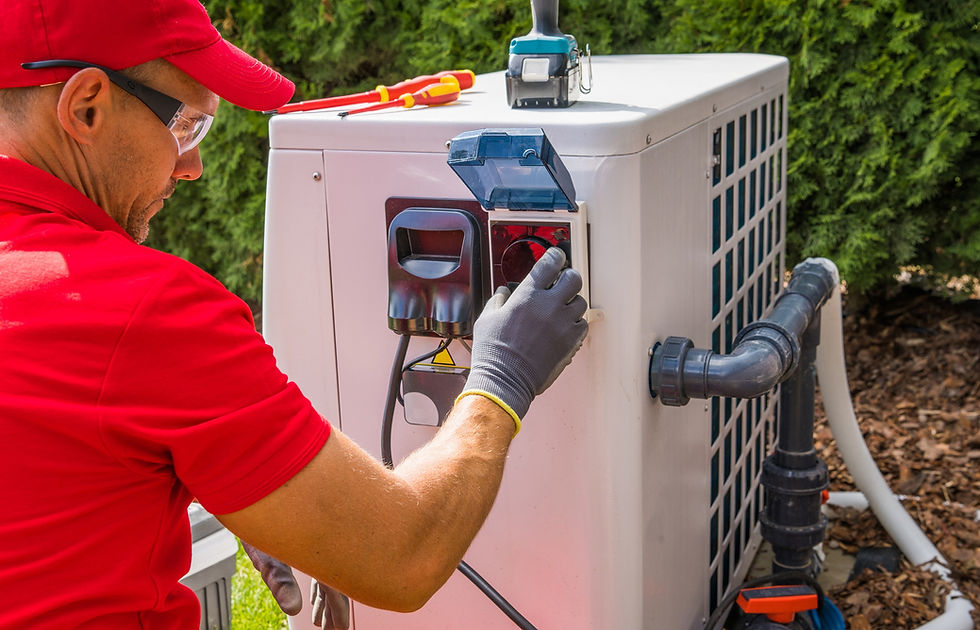How Your HVAC System Could Be Triggering Your Seasonal Allergies
- bryanedwards651
- Apr 15
- 4 min read
Have you been battling itchy eyes, a runny nose, or constant sneezing, even inside your home? If so, your HVAC system might be the unexpected culprit. While your heating, ventilation, and air conditioning system works hard to keep you comfortable, it could also be circulating dust, pollen, mold, and other allergens that trigger those annoying symptoms.
This post will explain how your HVAC system can impact your allergies, what signs to watch for, and, most importantly, what you can do to make your home an allergen-free haven.
What’s Hiding in Your HVAC System?
Your HVAC system is more than just a piece of machinery; it’s like your home's lungs. It pulls air in, conditions it, and then returns it. But if your system isn’t properly maintained, it can accumulate and spread allergens, making indoor air unhealthy.
Here are some common allergens that might be lurking in your HVAC system:
Dust and Dust Mites
HVAC systems can collect and redistribute dust particles, but unfortunately, these particles often carry tiny dust mites. Dust mites thrive in warm, humid environments and are among the most common triggers for indoor allergies.
Pollen
Even though pollen originates outdoors, it can sneak into your home through open doors and windows or hitch a ride on your shoes and clothes. Once inside, your HVAC system can circulate throughout your home, turning every room into a pollen hot spot.
Mold and Mildew
Mold spores thrive in moist, humid conditions, so your HVAC system could become a breeding ground for these allergens. Condensation in air ducts or on coils provides the perfect environment for mold to grow, releasing spores into the air.
Signs Your HVAC System Is Affecting Your Allergies
Do you suspect that your HVAC system might be behind your allergy symptoms? Here are some telltale signs to keep an eye on:
Worsening Symptoms Indoors: If your allergy symptoms improve when you're outside but flare up as soon as you get home, your HVAC system might be the problem.
Unusual Odors: A musty smell could indicate mold growth in your system, while a dusty odor points to clogged filters or dirty ducts.
Visible Dust or Mold: Dust buildup around vents or the sight of mold in or near your HVAC unit is a big red flag.
High Humidity Levels: Excessive indoor humidity can create an ideal mold and dust mites environment.
Dirty Air Filters: If your HVAC filter appears dirty or clogged, it may not effectively capture allergens.
How to Minimize Allergens from Your HVAC System
The good news is that you don’t have to live with an allergy-triggering HVAC system. You can enjoy a fresh indoor environment with a few proactive steps.
1. Change Your Air Filters Regularly
Your HVAC filters are your home’s first line of defense against allergens. Aim to replace filters every 1–3 months or upgrade to a high-efficiency filter, such as a HEPA filters that can capture up to 99% of particles.
If you have pets or live in a high-pollen area, you may need to replace your filters more frequently.
2. Schedule Professional HVAC Maintenance
A professional tune-up is crucial for your system's efficiency and ensuring good indoor air quality. HVAC technicians can clean your system, check for mold, and ensure everything functions correctly.
Annual or bi-annual maintenance is a small investment compared to the discomfort of ongoing allergy symptoms.
3. Keep Your Ducts Clean
Over time, air ducts can accumulate dust, debris, and even mold. Professional duct cleaning can help eliminate these buildup issues, ensuring that the air circulating through your home is fresh and allergen-free.
Look for signs like dust around vent openings or an unusual amount of debris in your system as indicators that duct cleaning might be necessary.
4. Invest in a Whole-Home Air Purifier
Consider installing an air purifier that integrates with your HVAC system to enhance protection. These devices can neutralize allergens, bacteria, and even some VOCs, improving air quality further.
5. Regularly Vacuum and Dust Your Home
Your HVAC system can only do so much. To minimize the amount of dust and allergens entering the system, keep your home clean by vacuuming and dusting regularly. For best results, use a vacuum pump with a HEPA filter.
6. Control Humidity Levels
High humidity is uncomfortable and a magnet for mold and dust mites. To maintain a comfortable indoor environment, use a dehumidifier to keep the humidity levels between 30% and 50%. Many innovative HVAC systems have integrated humidity controls, making this step effortless.
7. Seal Your Home Properly
Addressing gaps and leaks around windows and doors is essential, as they can let outdoor allergens into your home. Sealing these openings can help create a healthier indoor environment.
How Your HVAC System Can Support Seasonal Allergy Relief
A properly maintained HVAC system can help alleviate your allergy symptoms. Here’s how:
Filtering Out Allergens: Your HVAC system can act as an air purifier by removing harmful particles from the air using high-quality filters that are replaced regularly.
Improving Ventilation: A well-maintained HVAC system ensures good airflow, preventing allergens from settling in your home.
Controlling Humidity: Many HVAC systems can help regulate moisture levels, which is key to discouraging mold and dust mites.
With the proper steps, your HVAC system can become your greatest ally in keeping allergens at bay.
Breathe Easier Starting Today
Your HVAC system plays a more significant role in your health than you might think, and the good news is that you have the power to control it. By taking steps to keep your system clean and well-maintained, you’ll not only protect your home but also improve your overall quality of life.
If managing your HVAC system feels overwhelming, don’t worry—we’re here to help! Contact your local HVAC professional for a health checkup and tailored solutions. You’ll be closer to the fresh, allergen-free air your home deserves.






Comments